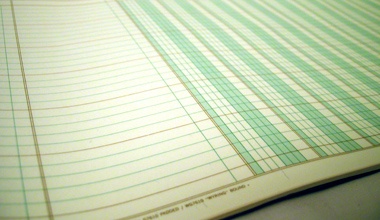Every Little Cent
One reason many people seem to struggle with building a budget that actually works for them is a lack of understanding when it comes to telling where their money really is going. Between cash, debit cards, credit cards, automated payments, one-click purchases and all the other myriad ways we can pass our money along to someone else, is it really any surprise that creating a spending plan that works longer than a week is a difficult proposition? Building a budget that is truly effective requires a very thorough understanding of your own spending. There is a relatively simple approach to getting the necessary grasp on your typical spending — tracking every cent you spend. It isn’t a long term approach, of course, but if you’re working on getting your finances under control, a good first step is to spend a week or a month simply observing where you’re actually spending your money. It’s a matter of making a note every time you pull out your wallet, whether you’re spending cash or using plastic. At the end of your observation period, you’ll have a list of transactions that will give you a much clearer view of your expenses than a bank statement can. At a bare minimum, you’ll have an idea of where the cash you pull out of the ATM goes.
Keep It Simple
For most people, tracking spending for a full month will give you the best picture of finances: how you spend right after your paycheck comes in can be quite different from how you spend during other parts of the month, for instance. However, it is difficult to keep up with tracking your spending for that long. There are a few ways to make the process easier:
Keep a notebook with your wallet, so that you have to pull it out whenever you’re making a purchase. Write down every transaction, even if you get a receipt. It helps turn the process into a habit — and you’ll have one document with all your information. Go with the paper route. Messing with texting your expense to yourself or shooting off an email just adds more hassle than a simple note.
The important part of keeping this sort of ‘every cent counts’ record is to get the best data possible to work with. While some people can build a budget that they can stick to without such specific records, the fact of the matter is that most of us struggle to stick to a budget if we have spend without accountability. For those of us who fall into that category, budgeting becomes much easier when we already know how much we spend in a given category over the month. We know where we should cut back — and where we can cut back.
Processing Data
At the end of the observational period, you’re likely to have at least a few pages worth of records that you’ll need to interpret into a usable format. You may be able to spot patterns without doing anything in the way of processing, but it’s probably worth investing some time in the project and creating a spreadsheet with each of your expenses. Categorizing your expenses can make spotting patterns much easier — like picking up a candy bar every afternoon for a snack. These sorts of patterns are the starting point for changing your finances for the better. There are both good and bad spending patterns, and being able to see them can make a major difference in your ability to budget. Once you’ve gone through all the data you’ve collected, it’s time to compare it to what you’d like your budget to actually be. There may be a large discrepancy between your plan and reality — the typical reason that so many budgets fail — so make note of where those big differences are. Breaking just one or two patterns may make all the difference in bringing your actual spending in to line with a budget: if something like a daily candy bar is driving up your budget, taking a step to eliminate the need for that candy bar (like bringing a snack to work along with your lunch) can make a dramatic difference. It’s worth noting that breaking a habit is often difficult — replacing it is usually easier. That fact applies to spending as much as any other habit. After an observational period, it almost always makes sense to end your financial tracking. It’s useful to get the sort of data you need to form a lasting budget, but it can be a fairly time-consuming process. Furthermore, you probably don’t need a cent-by-cent accounting of your finances beyond the planning stage. You may need to occasionally revisit your daily spending habits to make sure you’re still on track, but otherwise, reviewing your bank statements and receipts will more than suffice. It’s also worth looking into some sort of financial tracking application: while they may not be so useful in understanding the details of your spending, they can provide you with a broad overview that can be enough to guide you if you’re already on track.
